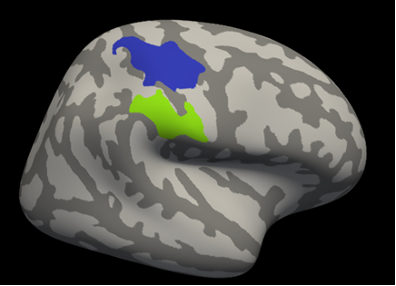BEACON is a brain imaging project looking at how the brain processes emotion and cognition in individuals with anorexia nervosa. We are also interested in how autistic characteristics affect these brain processes and how these processes change over time.
Why are we doing this?
Previous research has suggested that people with anorexia nervosa have difficulties processing emotion and have different ways of thinking (cognition) to people without anorexia nervosa. These difficulties and differences have been postulated to perpetuate the illness, but the exact mechanisms through which this may be happening remain unclear. Previous research has also shown that autism and eating disorders are linked with individuals with anorexia nervosa on average having high levels of autistic features to those without an eating disorder.
There are a lot of important questions that we want to explore, such as how does the brain process emotion and cognition in anorexia nervosa, do these processes change over time as people recover, and how do autistic features impact upon these processes? These questions are important as the more we know about the intersection of autism and eating disorders the better able we are to adapt treatment.
How are we doing this?
We have scanned the brains of people with and without anorexia nervosa, once in 2017-2019 and again in 2021-2022. We also took a range of other measurements (through questionnaires and interviews) including measures of autism. We are still in the process of analysing the data but we have published some of our findings (which can be read for free and is listed below).
What have we found so far?
Analysing our data we have shown that individuals with anorexia nervosa do have increased levels of autistic features compared to people without anorexia nervosa. But also interesting, individuals with anorexia nervosa are diverse, having different ‘cognitive profiles’ (ways of thinking) from each other.
Analysing our brain findings we have found a number of novel results. Firstly, we have found that people with anorexia nervosa do process emotions differently but do not process cognitive tasks differently from non eating disorder controls. When individuals with anorexia nervosa who are not underweight, view happy pictures, parts of the brain associated with processing the picture work together differently when compared with underweight people and individuals without anorexia nervosa. This could mean that non-underweight individuals with anorexia nervosa think differently about happy emotional pictures than underweight people and people without anorexia nervosa. However, when people with anorexia nervosa do puzzle tasks (to test cognition) we see similar brain regions activate to individuals without anorexia nervosa.

Secondly, we have found that autistic traits in this population affect brain function but not brain structure. The brains of underweight people with anorexia nervosa are usually smaller and look different to people who are at not underweight. This shrinkage seems to be reversible when people are nourished. We were interested if this change in brain structure was related to autistic traits and found that it is not. However, we did find that in a puzzle task, higher autistic traits in people with anorexia nervosa was associated with a difference in the way the brain functioned in areas of the brain associated with visual processing. This could mean that higher levels of autistic characteristics in individuals with anorexia nervosa affect how the brain processes puzzle pictures.

What's next?
We are analysing our data on how the brain changes over time and hopefully we will soon have results we can share with everyone.
If you are interested in the findings of our studies, or want to know more about how we analysed our results, the papers are free to read and are listed below.
References:
Neural Correlates of Theory of Mind Are Preserved in Young Women With Anorexia Nervosa (https://doi.org/10.3389/fpsyg.2020.568073)
The emotional face of anorexia nervosa: The neural correlates of emotional processing (https://onlinelibrary.wiley.com/doi/10.1002/hbm.25417)
Exploring neuropsychological and socio‐emotional task performance in anorexia nervosa: A cluster analytic approach
(https://doi.org/10.31219/osf.io/96h8g A free version can be read here)
The neural correlates of a central coherence task in young women with anorexia nervosa (https://doi.org/10.1002/erv.2852)
Examining the relationship between autistic spectrum disorder characteristics and structural brain differences seen in anorexia nervosa (https://doi.org/10.1002/erv.2910)
You might find these interesting too!
A brief PEACE+ animation for people with ADHD and eating disorders. It explains how sensory, attention and interoceptive differences affect eating, and shares low-effort supports. Co-produced with clinicians and lived experience contributors.
On 20 May 2025, we welcomed over 250 attendees from across the UK and internationally to the fourth PEACE Pathway Conference. The day brought together clinicians, researchers, lived experience experts, and service providers to share knowledge and tools for improving care for autistic individuals with eating disorders.
A powerful animated short film that brings to life the stories of autistic girls and women in their own words.